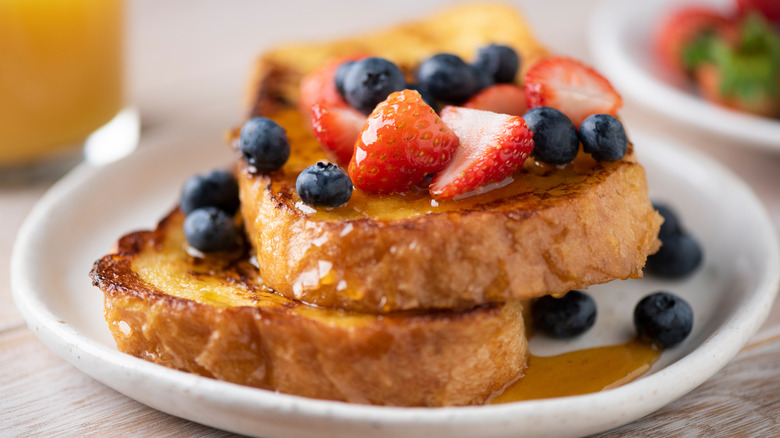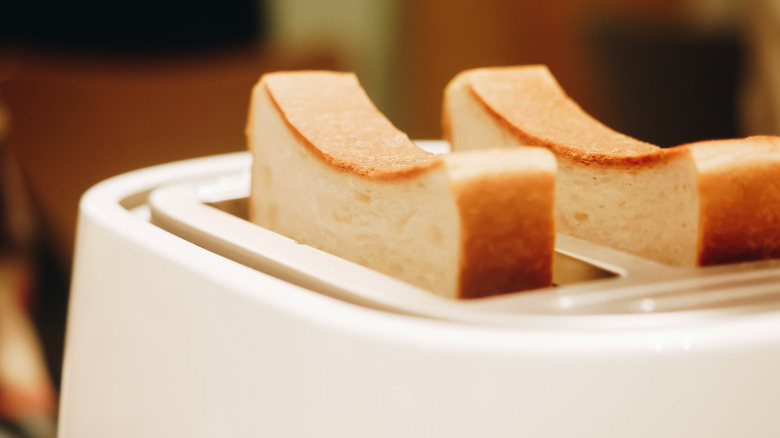The Simple Hack To Keep Your French Toast From Getting Soggy
Aside from the Bloody Marys, French toast may be why we love brunch so much. The meal, which has also become a verb, gives us an excuse to enjoy breakfast food so indulgent it may as well be considered dessert. Whether topped with pure maple syrup (please, no imitations) or given the VIP treatment and stuffed and coated, French toast is enjoyed worldwide by different names. According to Slate, French toast is called "German toast, eggy bread, French-fried bread, gypsy toast, Poor Knights of Windsor, Spanish toast, nun's toast, and pain perdu" in France. Despite its name, French toast was created by the Roman empire during the early fifth century and named much later in 1724 after Joseph French.
Called 'pan dulcis' by the Romans, stale bread was soaked in a custard made of milk and eggs before being fried. Referred to as "cucina povera" or poor cooking, French toast is one of many recipes like bruschetta, panzanella, and ribolitta, created in rural Italy to use stale bread and avoid food waste we still enjoy today, per Eataly.
While French toast can be made with just a few humble ingredients or maybe because of it, each component is critical to the recipe's success. Beginning with choosing the best type of bread for French toast, creating the coveted crispy exterior and creamy interior can be tricky. Fear not, we've got a simple hack for preventing your next brunch superstar from getting soggy, but you're on your own with burning it.
Toast the bread first
Choosing the right ingredients helps avoid the common mistakes when preparing French toast that results in soggy, spongy French Toast. Yuck! Beginning with a ¾" thick slice of enriched bread like a buttery brioche or challah, French toast is ideally made with stale bread, which is a great way to use up kitchen waste. According to Food Network, bread that is a day or two old absorbs the milk and egg mixture better than fresh bread and can stand up to the 10 to 20-second soak in the custard without falling apart.
While that seems simple enough, we can't predict cravings, and sometimes, we can't wait 24 hours to get our French toast fix on. Fear not. America's Test Kitchen says you can speed the process up by lightly toasting the bread on the lowest setting on your toaster or toaster oven for a few minutes until the bread feels dried out and is slightly golden. If one round of toasting doesn't do the trick, avoid cranking up the heat and just toast the bread again. Be careful not to brown the toast.
When preparing French toast for a crowd, where a two-slice toaster would take an eternity (especially before your first coffee), place the fresh bread on a sheet pan in a 300 degrees oven for roughly 12 minutes before proceeding with your favorite French toast recipe. Use that time to whip up a batch of spicy Bloody Marys or pop the champagne for mimosas.

